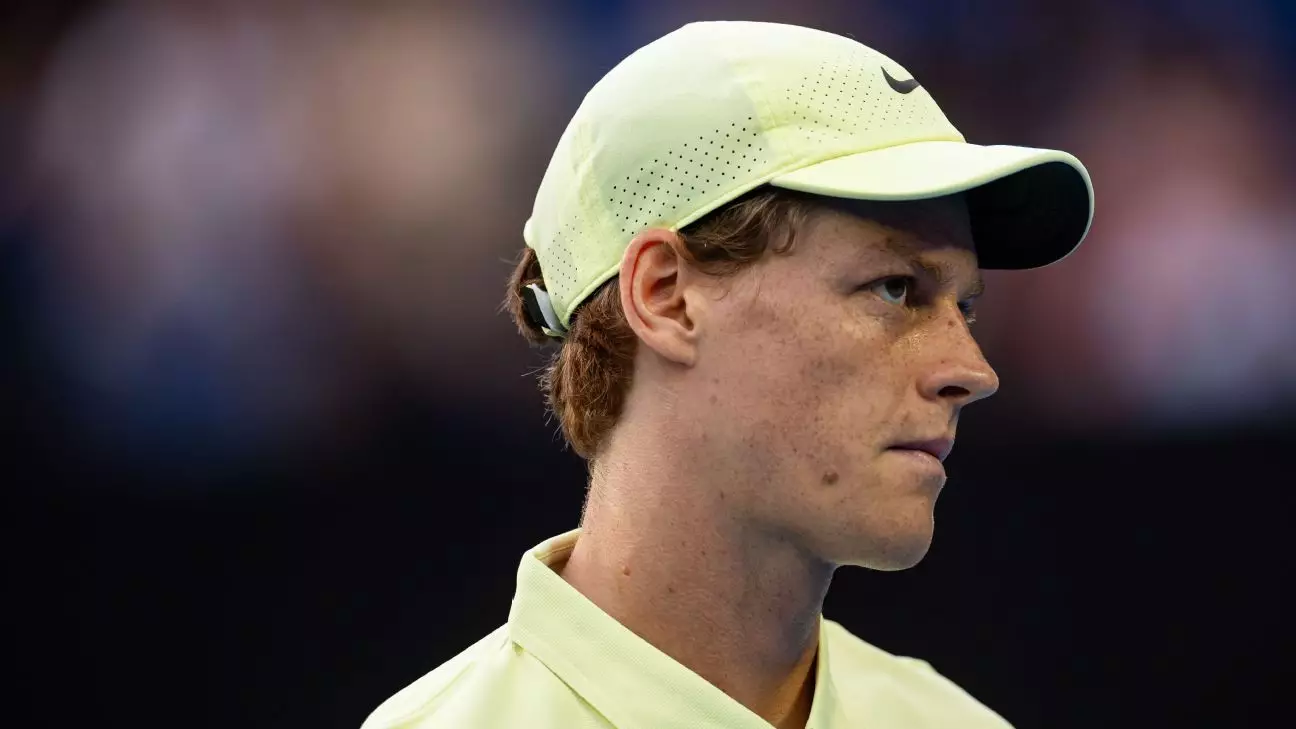Jannik Sinner’s unexpected three-month ban due to doping allegations shocked the tennis world and affected both his professional and personal life. As one of the most promising young talents in tennis, Sinner found himself at the center of a controversy that calls into question not just competitive integrity but the very nature of camaraderie among professional athletes. Upon returning to the sport at the Italian Open, he navigates the jarring experience of bewildering support and the uncomfortable silence from some expected allies. His introspection reveals that the tennis community is a complex tapestry where human emotions intertwine with competitive endeavors.
Initially taken aback by the diverse reactions from fellow players, Sinner revealed how some messages of support caught him completely off guard. It becomes evident that in such a high-stakes environment, relationships can be tested at the slightest hint of controversy. The dishonorable whispers surrounding his name may lead to a fractured sense of belonging within the locker room. In contrast to the camaraderie often romanticized in sports, Sinner’s experience underscores a darker aspect: isolation amidst scrutiny. It’s a poignant reminder that elite athletes wrestle not only with physical challenges on the court but also with vulnerable emotional territory off it.
A Fragile Trust and Unspoken Judgments
The suspension was predicated on what was deemed to be accidental contamination by a banned substance—a narrative that leaves room for debate. While the World Anti-Doping Agency’s (WADA) leniency in allowing him to return without missing major tournaments sparked trust issues among fellow competitors, Sinner’s feelings of alienation become palpable. Reflecting on his experience during the previous Australian Open, he confessed that players were looking at him differently. It appears this incident struck a fragile cord, not merely affecting Sinner’s self-image but also reframing how professionalism and integrity are perceived in a world of high competition.
Coach Simone Vagnozzi acknowledged the discomfort, admitting to sensing glares and speculation from other players. He astutely notes that such scrutiny is almost inevitable when allegations surface, painting a vivid picture of how reputations can shift. Yet, in this environment, there emerged rare moments of kindness. Positive remarks from players like Holger Rune and Casper Ruud, even if in contrast to the silence from others, serve as a reminder that compassion can exist alongside competitive rivalry. Such instances highlight the duality inherent in a sport where players are both adversaries and colleagues, depending on the moment.
The Harsh Reality of Isolation
Perhaps one of the most poignant revelations was Sinner’s yearning for connection during his ban. With restrictions preventing him from attending his friends’ events in other sports, his isolation became an uncomfortable companion. Watching from the sidelines while wanting to support peers in cycling and motorsport, Sinner experienced an emotional void that no athlete wishes to face. This dilemma raises critical questions about the ramifications of how athletes are treated during controversies. The aspect of wanting to cheer for friends, yet being barred from that engagement, conveys a harsh reality—a metaphor for his struggle to break free from the chains of gossip.
Furthermore, the incident serves as a reminder that professional sports are populated by real individuals, each with their emotional landscapes. The social implications of being sidelined due to controversies foster a sense of disenchantment that can resonate deeply. Rugby, cycling, and motorsport communities tend to be interlinked with tight relationships forged in training and competition. Yet, here lies Sinner—prevented from sharing that solidarity in a moment when he needed it the most.
A United Front—or Not? Coaches and Strategies for Success
While on the topic of support, Sinner’s coaching dynamic also plays a crucial role in his journey moving forward. With Darren Cahill poised to retire, the impending change challenges Vagnozzi to consider taking the helm fully. His reflections on the importance of collaborative coaching suggest that success in tennis is rarely achieved in isolation. It’s fascinating to contemplate how the team dynamic contributes to an athlete’s resilience in the face of adversity. In an individual sport like tennis, the collective effort behind the scenes can be just as significant as the on-court performance.
Yet, Vagnozzi’s admission shows that while he can coach Sinner alone, having different perspectives is invaluable for optimal growth. This sentiment underscores a larger truth: the synergy created in a team can foster an environment conducive to overcoming challenges—much like Sinner’s journey through isolation and judgment. It indicates that even though the sport is solitary in many respects, the underlying structures of support can make all the difference.
Anticipation for the Return
As Sinner prepares to step back onto the court for his opening match against Mariano Navone at the Italian Open, anticipation hangs in the air. Although he enters the tournament on a 21-match winning streak, his struggle on the red clay highlights the challenges of re-establishing himself. Sports, like life, often throw curveballs—unpredictable circumstances that test an athlete’s mettle. Despite these challenges, Sinner’s return promises to be a compelling narrative of resilience and redemption. It remains to be seen how he will navigate not just the physical demands of a new surface, but also the psychological landscape that accompanies his comeback. Sinner has become not just a player but a symbol of the complexities surrounding modern sport.


Leave a Reply